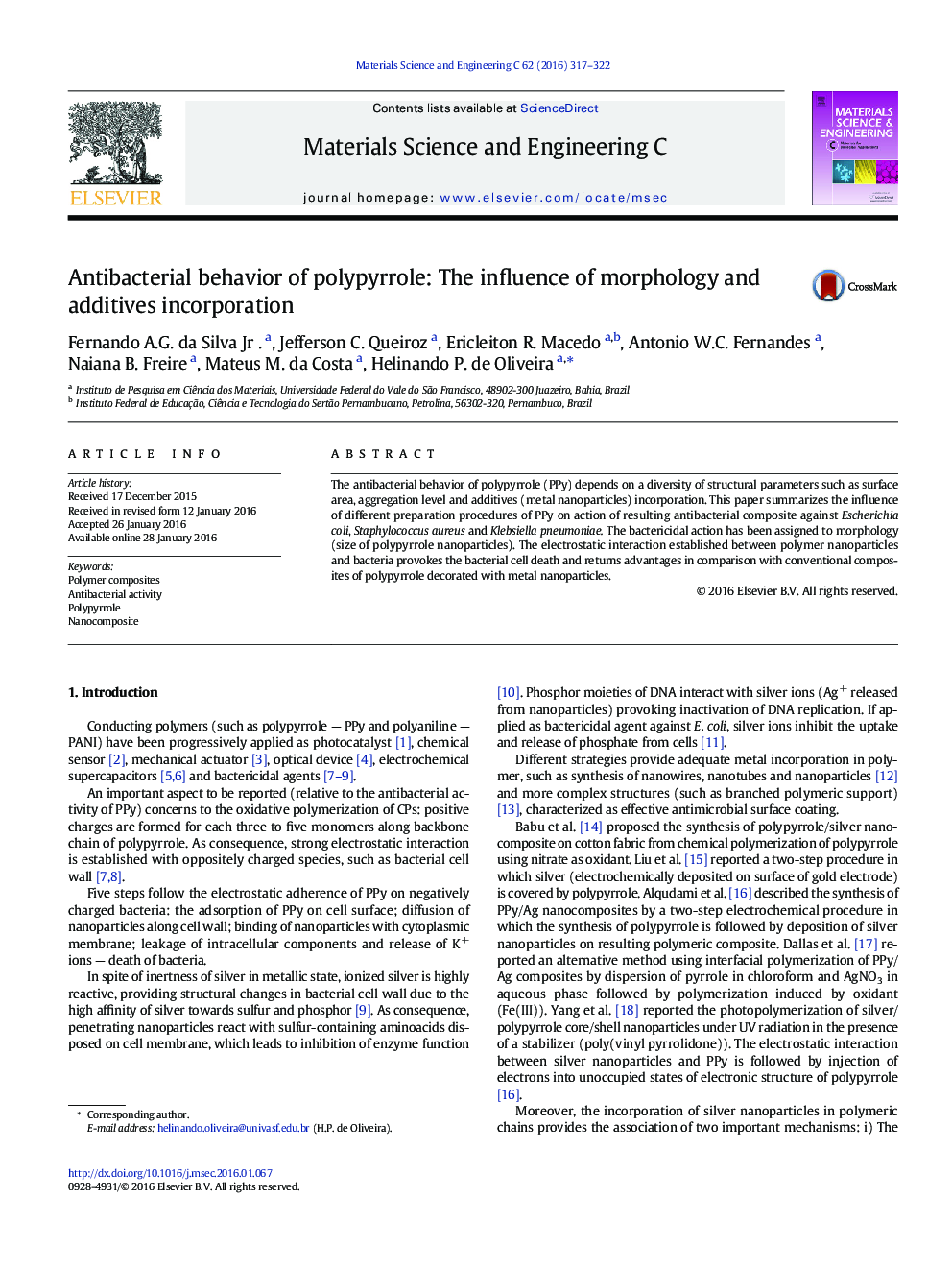| Article ID | Journal | Published Year | Pages | File Type |
|---|---|---|---|---|
| 7867727 | Materials Science and Engineering: C | 2016 | 6 Pages |
Abstract
The antibacterial behavior of polypyrrole (PPy) depends on a diversity of structural parameters such as surface area, aggregation level and additives (metal nanoparticles) incorporation. This paper summarizes the influence of different preparation procedures of PPy on action of resulting antibacterial composite against Escherichia coli, Staphylococcus aureus and Klebsiella pneumoniae. The bactericidal action has been assigned to morphology (size of polypyrrole nanoparticles). The electrostatic interaction established between polymer nanoparticles and bacteria provokes the bacterial cell death and returns advantages in comparison with conventional composites of polypyrrole decorated with metal nanoparticles.
Related Topics
Physical Sciences and Engineering
Materials Science
Biomaterials
Authors
Fernando A.G. da Silva Jr ., Jefferson C. Queiroz, Ericleiton R. Macedo, Antonio W.C. Fernandes, Naiana B. Freire, Mateus M. da Costa, Helinando P. de Oliveira,
